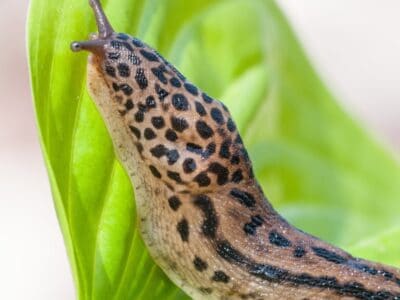Banana Cinnamon Ball Python
Python Regius
Banana cinnamon ball pythons came from combining the banana and cinnamon genes.
Advertisement
Banana Cinnamon Ball Python Scientific Classification
- Kingdom
- Animalia
- Phylum
- Chordata
- Class
- Reptilia
- Order
- Squamata
- Family
- Pythonidae
- Genus
- Python
- Scientific Name
- Python Regius
Read our Complete Guide to Classification of Animals.
Banana Cinnamon Ball Python Conservation Status
Banana Cinnamon Ball Python Facts
- Prey
- Rats, mice, birds, lizards
- Main Prey
- Rats and mice
- Name Of Young
- Hatchling, snakelet
- Group Behavior
- Solitary except during mating season
- Fun Fact
- Banana cinnamon ball pythons came from combining the banana and cinnamon genes.
- Litter Size
- 3-15
- Diet
- Omnivore
- Lifestyle
- Nocturnal
- Favorite Food
- Rats and mice
- Common Name
- Cinnamon banana ball python
- Group
- Knot
Banana Cinnamon Ball Python Physical Characteristics
- Color
- Yellow
- Red
- Lilac
- Skin Type
- Scales
- Lifespan
- 20-30+ years
- Weight
- 5-8 pounds
- Length
- 4-6 feet
- Age of Sexual Maturity
- 2-4 years
- Venomous
- No
- Aggression
- Low
View all of the Banana Cinnamon Ball Python images!
Banana cinnamon ball pythons are nonvenomous constrictors and beautiful examples of great pet snakes.
One of the hundreds of different morphs, or color patterns, banana cinnamon ball pythons are just as easy-going as others. It’s a combination of two genes, one originally found in an African wild mutation, the other developed by a breeder.
Banana Cinnamon Ball Python Facts
- Banana cinnamon ball pythons have at least the banana and cinnamon genes in their breeding.
- Their care is the same as other ball pythons; they only look different than a normal ball python.
- Cinnamon ball pythons can have problems with kinked spines and cranial deformations, but it’s not common.
- Depending on the genes in the snake, banana cinnamon ball pythons start at about $200 and go up from there.
Banana Cinnamon Ball Python Scientific Name and Classification
All ball pythons are members of the Pythonidae family, along with reticulated pythons and Boelen’s pythons. With the scientific name of Python regius, banana cinnamon ball pythons aren’t a different species, merely a different color. Python refers to the giant snake that the Greek god Apollo defeated when he founded Delphi. The specific name of regius means kingly or royal. In Europe and other countries, ball pythons are called royal pythons. This common name is thanks to the idea that royalty used to wear ball pythons as jewelry; Cleopatra is often mentioned as having worn them as bracelets.
Banana Cinnamon Ball Python Appearance and Behavior

As a rule, banana cinnamon ball pythons are relatively docile. However, you may find individuals that are a little “higher strung” and more inclined to bite.
©Sanne Romijn Fotografie/Shutterstock.com
Ball pythons are medium-sized with thick, muscular bodies, triangular heads with seat-sensing pits around the upper lip, and blunt snouts. They measure 4-6 feet long at maturity, and the females are generally bigger than the males.
Banana cinnamon ball pythons often look like a typical banana ball python, with more reddish coloration in the areas that would be pale purple. Their markings are the usual ball python shape and, like other ball pythons, have vertical pupils and stripes that go through their eyes.
As a rule, banana cinnamon ball pythons are relatively docile. However, you may find individuals that are a little “higher strung” and more inclined to bite. Even so, ball pythons of all morphs are one of the most popular snakes because they’re easy to keep.
Banana Cinnamon Ball Python Morph Characteristics and Issues
Separately, banana and cinnamon ball python genes are “incomplete dominant.” That means neither of the genes takes complete precedence over the other. Instead, their patterns and colors mix, creating something new.
Such is the case with the banana cinnamon ball python.
When you mix the banana and cinnamon, you get a snake that generally looks like a banana ball python with reddish coloration in the lavender areas. They still get the black freckling as they age and have all the typical markings – just lighter.
Cinnamon ball pythons can sometimes have spinal and cranial deformities. The most common is called “duckbill,” where the snout is slightly flattened like a duck’s bill. But it seems random and restricted to just the super cinnamon, so in combination with banana shouldn’t be a problem.
Banana cinnamon ball pythons are relatively healthy and, even with a deformity, can live a long, healthy life.
Banana Cinnamon Ball Python Habitat and Diet
Ball pythons are native to the grasslands, forests, and fields of central and western Africa. They inhabit nearly 20 countries, including South Sudan, Chad, and the Democratic Republic of Congo. Their cryptic pattern allows this terrestrial species to slither under the tall grasses and scrub almost invisibly. These snakes take refuge in abandoned burrows and termite mounds, where they rest and digest after a meal.
This docile snake species eats small rodents like rats and mice; they also eat nestling birds, while juveniles in the wild may also eat lizards. As designer morphs, banana cinnamon ball pythons only aren’t found in the wild. Most of them will readily take frozen-thawed rats and mice.
Banana Cinnamon Ball Python Predators, Threats, Conservation, and Population
You won’t find this ball python morph in the wild. Instead, the banana cinnamon ball python is a designer morph created by ball python breeders to meet the demand for unique colors and patterns in their pet snakes.
Since 1975, over three million ball pythons have been exported from Africa. Breeders still import animals from their home continent so they can bring new genes into their breeding programs. For example, the banana, lavender albino, and piebald morphs were originally found in Africa as wild mutations; then proven in breeding.
According to the IUCN Redlist of Threatened Species, wild ball pythons are “Near Threatened.” Their numbers are decreasing in the primary export countries of Ghana, Benin, and Togo, possibly decreasing in others as well. However, scientists need more research to be sure of their numbers. Most research has centered around the main export countries, so there isn’t as much information on the other areas.
As medium-sized snakes, ball pythons have several natural predators, not the least of which is people. In their native habitat, people hunt them for meat, leather, and traditional medicine, in addition to predators like hyenas, big cats, and birds of prey.
Banana Cinnamon Ball Python Reproduction, Babies, and Lifespan
Just like other ball pythons, banana cinnamon ball pythons can live for 20-30 years, barring illness and injury; some live well into their 30s. These snakes mature 2-4 years after hatching. Females can take a little longer than males to become sexually mature.
About 50 days after mating, the female lays a clutch of 3-15 eggs and coils around them until they hatch 50-60 days later. The hatchlings spend a little time absorbing the remainder of the egg yolk, and then they’re out on their own.
Similar Animals
View all 284 animals that start with BBanana Cinnamon Ball Python FAQs (Frequently Asked Questions)
Where can you find banana cinnamon ball pythons?
These ball pythons are easily purchased from breeders, and prices start at about $200.
What do banana cinnamon ball pythons eat?
They are just like other ball pythons and eat rats and mice. Most never get big enough to take anything larger than a medium rat.
How do banana cinnamon ball pythons hunt?
Most snakes are ambush predators, and ball pythons are no exception. They find a quiet place to sit and wait until something wanders too close.
Do banana cinnamon ball pythons have any health problems?
Sometimes. The cinnamon part of the morph can have a couple of deformities, one is kinking in the spine, and the other is the snout’s formation. It sometimes comes out flattened and looks like a duck bill.
Thank you for reading! Have some feedback for us? Contact the AZ Animals editorial team.
Sources
- D'Cruze, N., Wilms, T., Penner, J., Luiselli, L., Jallow, M., Segniagbeto, G., Niagate, B. & Schmitz, A. 2021. Python regius. The IUCN Red List of Threatened Species 2021: e.T177562A15340592. https://dx.doi.org/10.2305/IUCN.UK.2021-2.RLTS.T177562A15340592.en. Accessed on 22 August 2022. / Published July 16, 2012 / Accessed August 22, 2022
- Python regius | Reptarium Reptile Database / Accessed August 22, 2022
- Ball Python Genetic Traits | Morphopedia / Accessed August 22, 2022


















